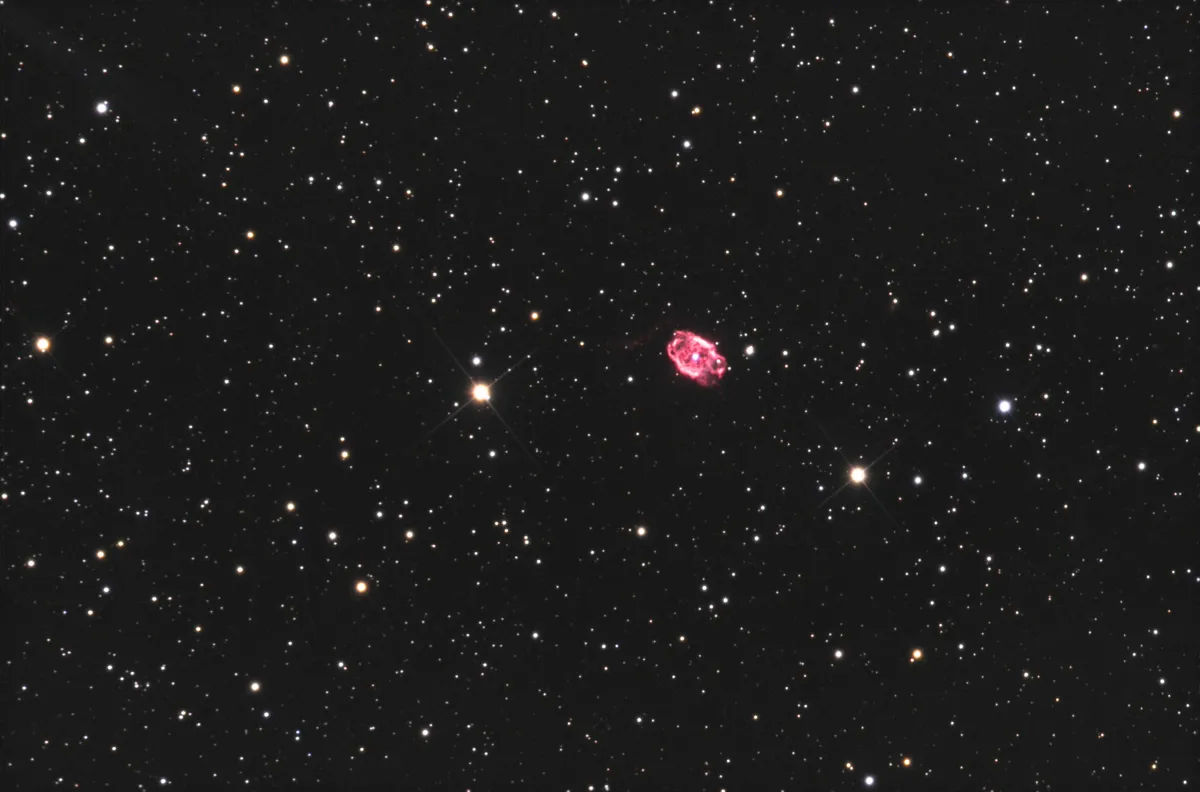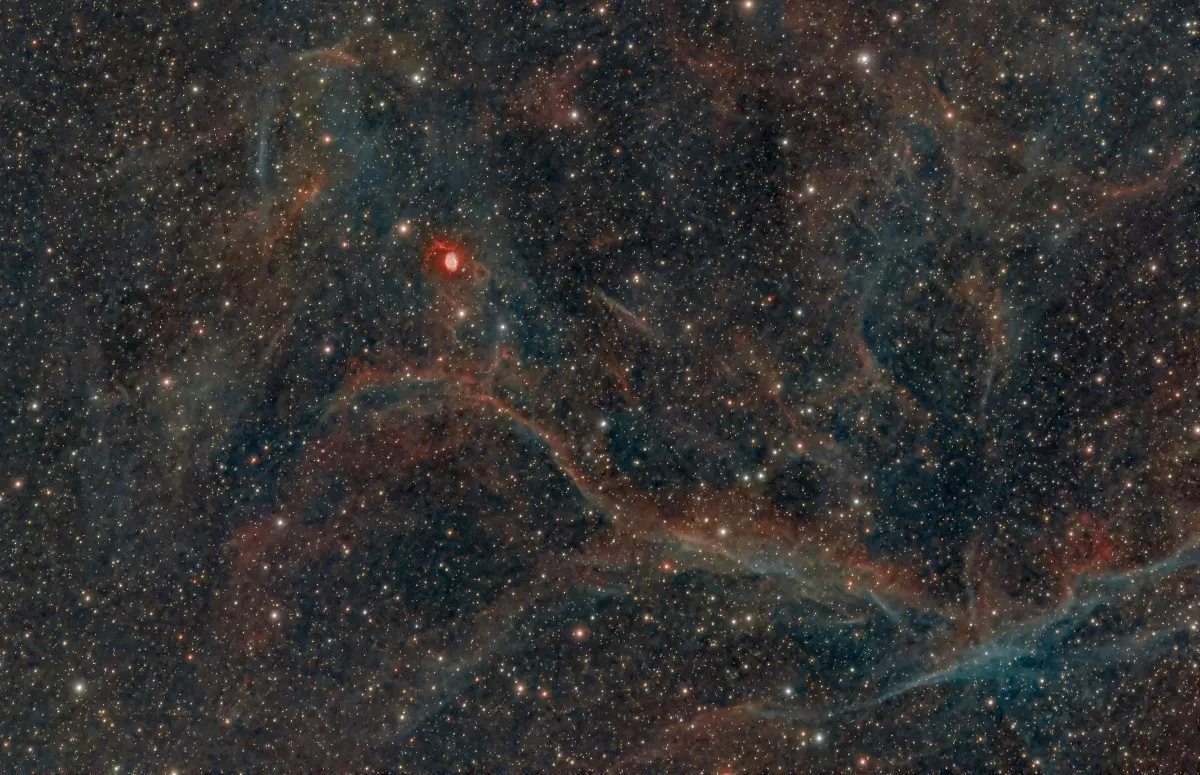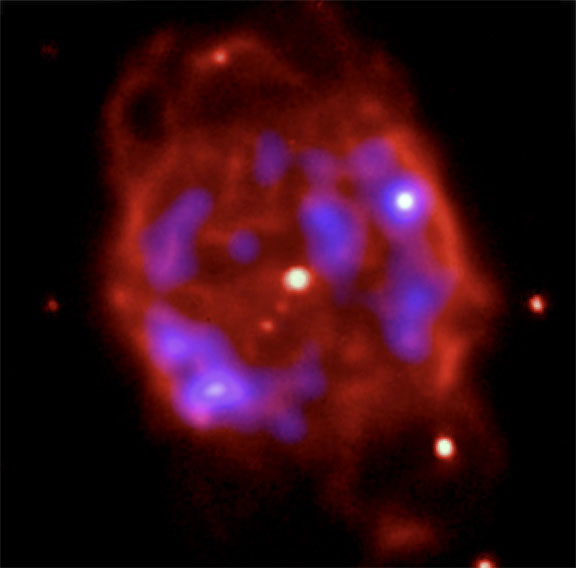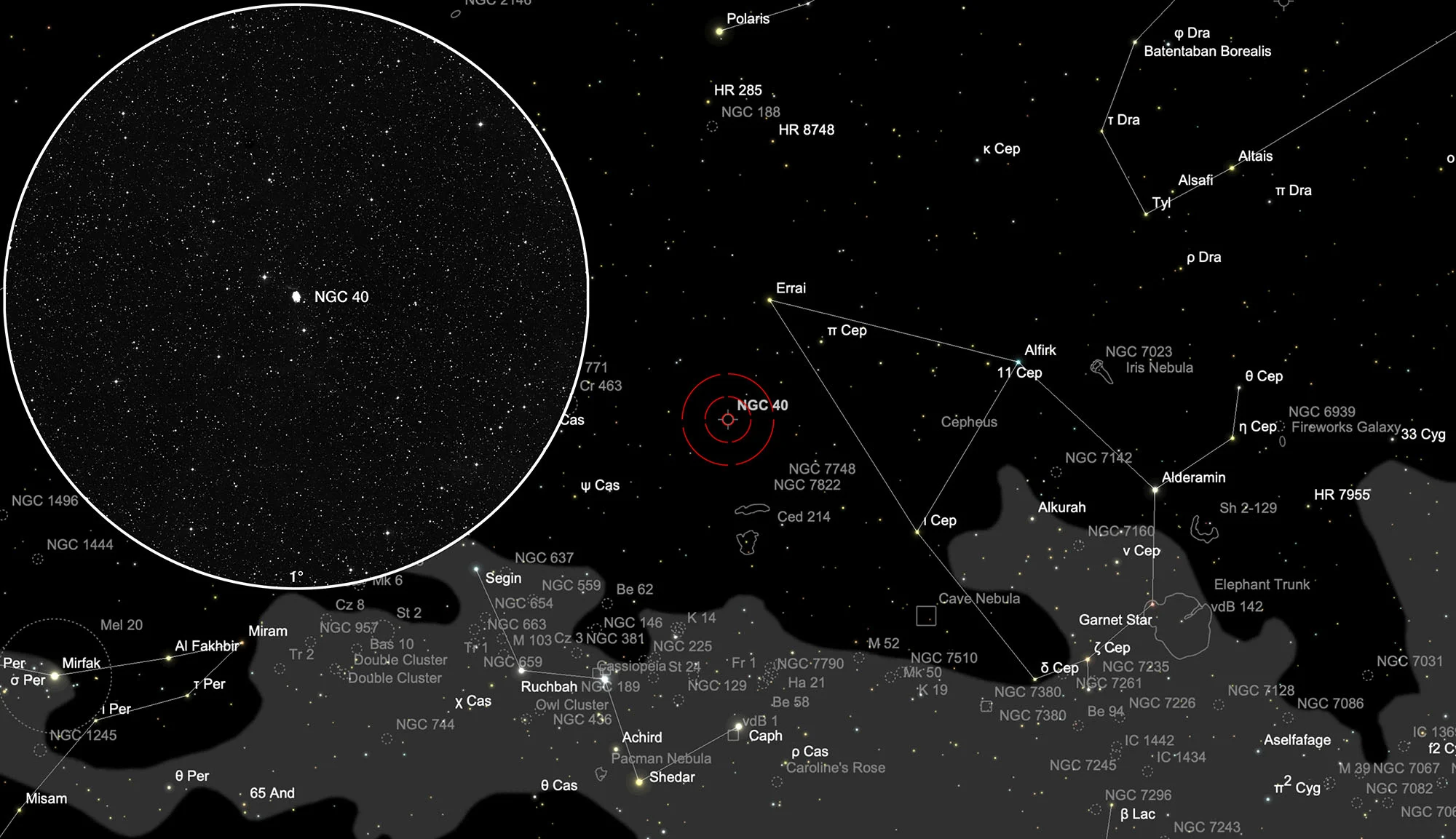Bow-Tie Nebula (NGC 40)


History
This planetary nebula was discovered on 25 November 1788 by William Herschel with its 18.7 inch reflector. He cataloged it as IV. 58 and logged: «A star of 9m, surrounded with very faint milky nebulosity. The star is either double, or not resolvable. Less than 1' diameter.» [464]
On 20 November 1829 (sweep 228), John Herschel described the nebula as «a star 11m with a luminous atmosphere 30" or 40" diameter.» Later on 29 October 1831 (seep 378) he noted: «A star 10m with strong nebulous atmosphere 15" diameter. Exactly round and pretty suddenly fading away makes a double star class 5 with a star preceding.» A third observation on 2 November 1831 (sweep 380) reads: «The large star of a double star strongly affectew tih a nebula burr.» [466]
In 1905 American astronomer Williamina Fleming first noted a bright emission spectrum and identified NGC 40 as a true planetary nebula. She wrote: «Five bright lines or bands appear in the spectrum..[but] the nebular lines near wavelength 5000 are not seen.» Based on Crossley photographs, Curtis (1918) described, «Central star about mag 10. The nebula resembles a truncated ring from the ends of which extend much fainter wisps. The brighter central portion is 38"x35" in PA 14°, while the total length along this axis is about 60".» [364]
Because of its appearance, the nebula was nicknamed «Bow-Tie Nebula».
Physical Properties

Planetary nebulae are the result of a sun-like star that ejected material into space during its transformation from a red giant to a white dwarf. The central star of NGC 40 is a recently formed proto-white dwarf with a surface temperature of about 50'000 K. The nebula is about 3000-4000 light years away and based on its angular extent of about 1.2 x 0.75 arc minutes, it measures about 1.2 light years in diameter. The outermost regions of earlier eruptions extend roughly four to five times into space.
Most of the radiation from the nebula comes from gas clouds, which are heated to around 10'000 K by the light of the star. This is shown in red in Fig. 2. Some regions have also been heated to several million degrees Celsius and radiate in the X-ray range (blue areas). Here, with a stellar wind at a speed of 894 km/s, ejected gas from the star collides with interstellar material and exerts high compression forces. In about 30'000 to 40'000 years, the radiation and the stellar wind of the white dwarf will fade and the glowing nebula will dissolve. [196, 296]
| Designations | PN G120.0+09.8: NGC 40, PK 120+09.1, ARO 1, VV 1, VV' 3 |
| Right Ascension (J2000.0) | 00h 13m 01s |
| Declination (J2000.0) | +72° 31' 20" |
| Dimensions | 48." (optical) |
| Distance | 0.9 kpc |
| Radial Velocity | -20.4 ± 0.9 km/s |
| Expansion Velocity | 29.0 (O-III) 26. (N-II) km/s |
| C-Star Designations | AG82 2, CSI+72-00102 0, DC 22918, Em* CDS 11, HD 826, PLX 31 |
| C-Star Magnitude | U: 11.14, B: 11.82, V: 11.58 |
| C-Star Spectral Type | WC 8 |
| Discoverer | FLEMING 1912 |
Finder Chart
The planetary nebula NGC 40 is located in the constellation Cepheus. It is circumpolar and is highest in the night sky from June to February.
